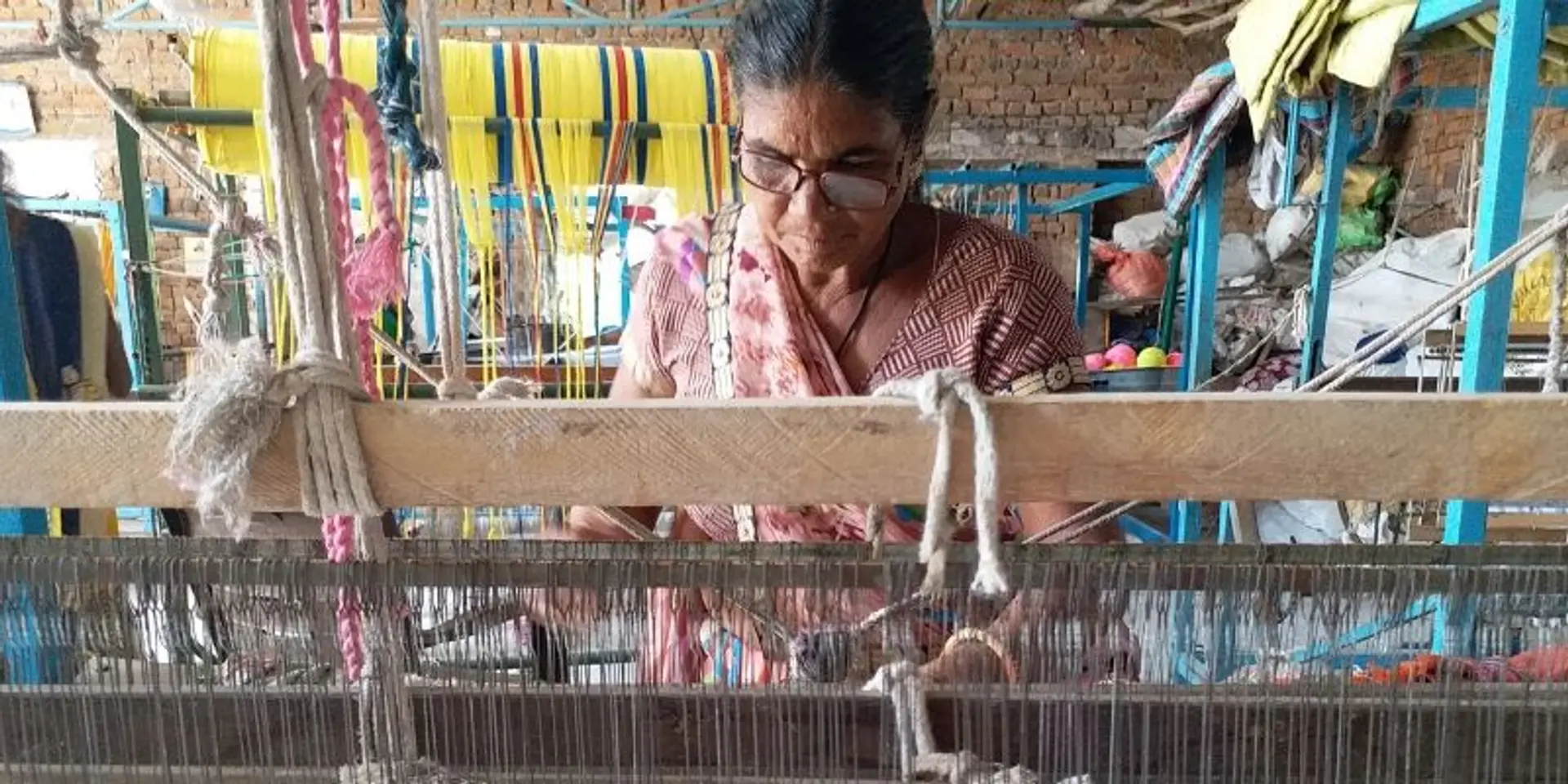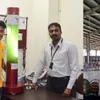This couple is providing a livelihood to tribals and villagers by producing fibre from chicken feathers
Mudita and Radhesh Srivastava, who have a background in textile design, have found a way to make fibre out of chicken feathers. They founded Khanak Design Studio in 2018 to produce apparel from the innovative fibre.
When you think of chicken, you think of eggs and meat – basically, poultry farming – carried out by many in the rural sector. But, what if there was a way to also produce fibre from chicken feathers?
Meet Mudita and Radhesh Srivastava, who have found a way to produce fibre out of chicken feathers. With a background in textile designing, the couple, hailing from Uttar Pradesh, co-founded Khanak Design Studio in 2018.
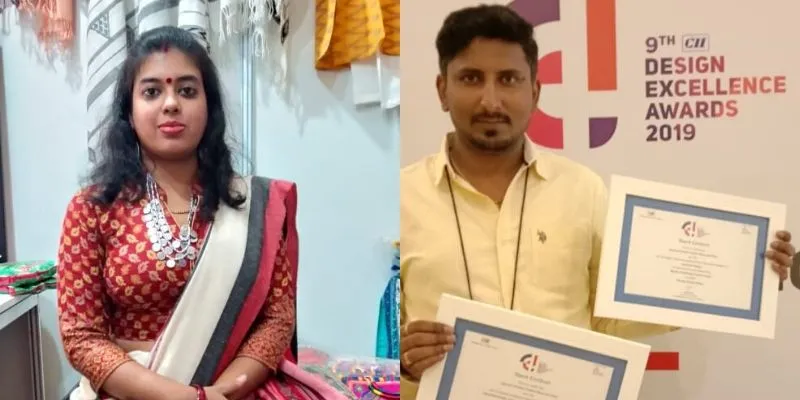
Mudita and Radhesh Srivastava
Speaking to SocialStory, Mudita says,
“Chicken feather fibre is much softer, lighter, and durable as compared to any other natural fibre. There is no other innovative, sustainable fibre being used at a mass scale in the world.”
Making chicken feathers a source of business
One day, while buying chicken, Radhesh noticed that one kg of chicken yeields 650 gm of meat and 350 gm of "waste". The couple realised that this waste comprises inner cells, skin, and feathers.
Unfortunately, this ‘waste’ is usually thrown in gutters, water bodies, landfills, and open areas by butchers, causing water pollution, air pollution, flu, and other health hazards.
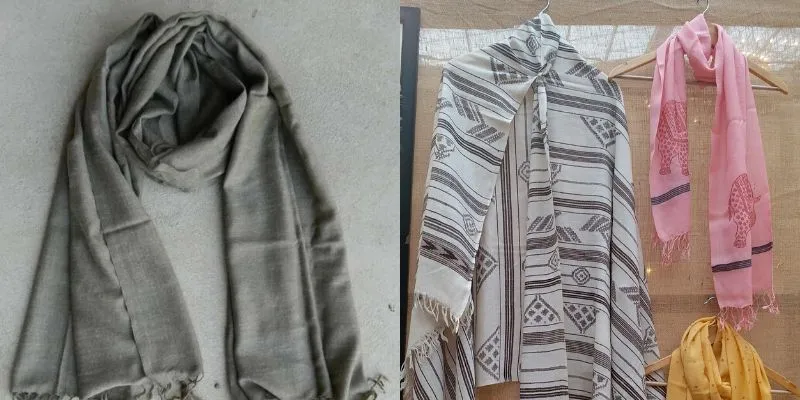
Khanak Design makes products from chicken fibre.
At the time, Radhesh was pursuing his post-graduation from IICD, Jaipur. Mudita had, by then, completed her bachelor’s in textile designing from the same institute.
Mudita recalls, “The next morning, he said he could do his project research on this waste. He went to his class at IICD and shared his idea with his faculty and batchmates. Everyone started laughing and making fun of him.”
Undeterred, the duo decided to take up the project as a challenge.
Radhesh explains, “We do not work on poultry waste; we work on butchery waste. There are three types of chicken butchery shops in India – frozen meat shops, chicken markets, and small hut shops – but their problem of dispatching the garbage to dump grounds was the same. Now, they are happy because we have solved their problem by collecting the garbage directly from them.”
The journey from feather to fibre
The duo went to the college library and started working; Radhesh submitted some of his work as part of his research. Unfortunately, he was again made fun of and the faculty only gave him pass marks and bad feedback.
Undeterred, the two continued their work. In 2014, for his final project, Radhesh presented this research to the jury with the fibre the duo had processed from the waste.
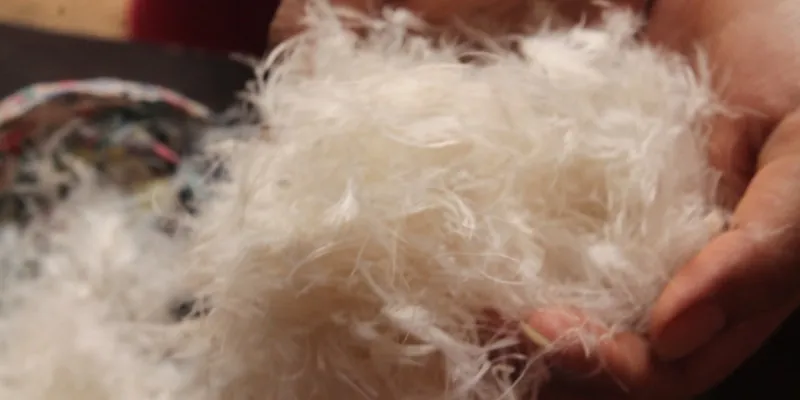
Chicken feathers can be used to make soft fabric.
“When he completed his presentation, one of the jury members, Chandra Shekhar Bheda, stood up and saluted Radhesh. He said this was the first jury in which he couldn't ask any questions because he never thought about this innovation. This was motivation and a proud moment for us,” Mudita says.
Later, Kurma Rao, a design consultant at Bunkari, told the couple that the research was not yet complete. They started researching again and eventually managed to produce yarn. In 2015, they set the yarn on the handloom, named it "chicken on the loom", and converted it into fabric.
Empowering tribals and low-income people
According to Radhesh, the fibre costs around Rs 2,000 per kg and they work on chicken butchery waste. The two claim that this project is not only innovative but is also benefiting tribal people of Asnawar village, ragpickers, and butchers.
Tribal weavers of Asnawar village were migrating to other areas for work due to the introduction of the power loom, which had replaced their handiwork. However, thanks to Khanak Design Studios, the same people have started working in their native areas.
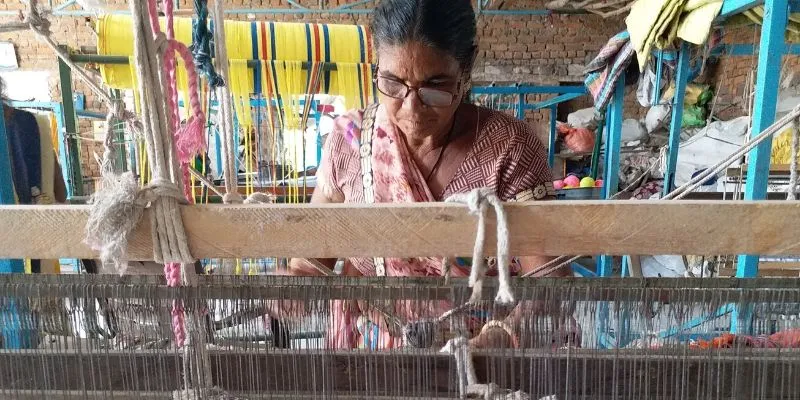
An employee works on a handloom to produce fabric.
Earlier, a tribal family of five to six used to earn Rs 200 to Rs 250 per day, but the duo claims that each member of the family is now earning Rs 250 per day, increasing the income of the total family. On the other hand, ragpickers who were earning Rs 40 to Rs 50 per day are now earning Rs 150 to Rs 200 per day.
Similarly, butchers who were facing problems in disposing of their waste are also benefiting from the venture.
Radhesh says,
“We plan training programmes and train groups of 20 people at a time. Artisans are trained according to their skills. These training programmes are divided into two stages – basic and advance training programmes. The duration of the basic programme is one month while the advance programme spans 15 days. It's not only artisans; ragpickers are also a part of these sessions.”
The plan ahead
The team became part of a one-year incubation programme called INVENT at Startup Oasis, supported by Villgro, and the UK Government and Technology Development Board. The startup also received funding of Rs 50 lakh, apart from the strategy support, from CIIE.
Radhesh says, “We are also in the process of raising our Series A round with the support of Villgro and Startup Oasis. Our dream is to start this project in each part of India. For the next two years, we plan to add more artisans and ragpickers, increase raw material capacity, launch new products, and target the export market.”
(Edited by Saheli Sen Gupta)

